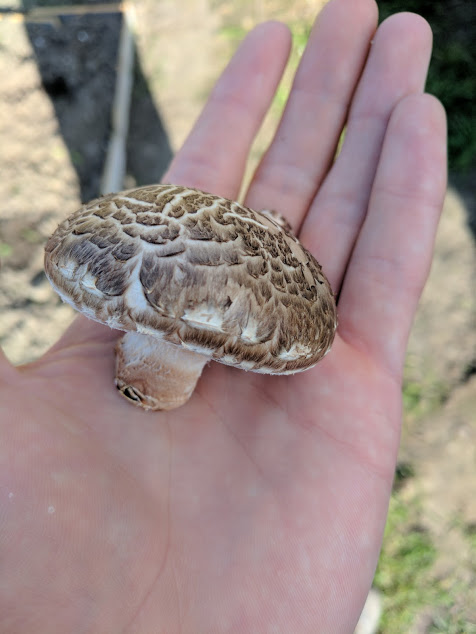Cultivation of Shiitake mushrooms in Bromley
 |
| Shiitake growing wild on decaying shii wood. |
Shiitake grow on a wide range of deciduous trees including maple,sweet chestnut, hornbeam and oak. Oak is the most popular wood for growing shiitake mushrooms in the west as it can easily infect the oak wood and oak is readily available.
Last year, after reading about mushroom cultivation and a newly blossoming interest in mycology and wood decay, i decided to give the cultivation of shiitake mushrooms a go. There were many guides from America stating shiitake mushrooms did well in American climate and were easily grown, but there was nowhere suggesting they could be grown in English climate, our oceanic island climate is not too alien to Japan and moisture levels here are far from an issue.
I ordered some dowels online in April last year that were packed with shiitake spores. Fungi don't grow in the same sense that plants do. When most people think of shiitake mushrooms or any mushrooms for that matter, they imagine the fruiting body, while the real organism is the series of white strands under the bark of the tree known as mycelium. Once conditions are right, the mycelium produces fruiting bodies, which are what we know as mushrooms, and these release spores, which travel through the wind and infect open wounds on trees or logs. I infected 3 oak (Quercus robur and Quercus ilex) logs, each being a foot in diameter and 5 feet in length. The fungi needs big enough logs to properly colonize it. This is done by drilling holes into the logs and hammering in the dowels. The logs were then left for a year under the shade of a tree to allow the mycelium to colonize the log.
 |
| Logs after being inoculated |
 |
| January 2017, the white mycelium shows this log has been succesfully collonised. |
One thing i noticed when researching what was the best logs to use and when to inoculate them is that there seemed to be two schools of thought as to when was the best time to inoculate the logs, some said it was best done when the wood was just cut, when the wood was fresh, green and full of sap. Another party said it was best to leave the logs for 2-4 weeks to allow the anti-fungal properties of the wood to die off. T
he second school of thought didn't make much sense to me, so i inoculated the logs the same day i got them.
 |
| The same logs being soaked a year later |
 |
| The fruiting body just pushing through, one of the dowels can be seen to the right |
 |
| The mushroom is now recongisable. The spores are stored underneath the cap. |
 |
| Once the veil has broken from the stem of the mushroom it is ready to be picked, when the gills are visible is a good rule to go by. |
Mixed feelings were had after this. While it was a successes, only one mushroom was produced. Not much compared to the huge amount other usually produced in a flush. The logs had all been successfully colonized, why such small amounts? I had to put it down to weather.
Last week, the weather was dull and gloomy with a lot of rain, so i decided to flush again. This time i kept the logs in a much shadier place, and sprayed them with water every time they were dry, with much more success this time!
Shiitake are both the most interesting and rewarding food i have grown and i plan to inoculate many more logs with shiitake and other fungi.











Comments
Post a Comment